About this blog: Gangtok is perhaps one of the most beautiful hill stations of India. This small Himalayan town has a myriad of attractions in and around. Once you are here, you will feel that you are in a different place altogether. Neat and clean, the city is as peaceful as you want it to be and as beautiful as your heart wants to see. The capital of Sikkim with all its beauty and charm will make you fall in love with it. We have visited Gangtok a number of times and in this blog, we will share with you our experience and expertise on Gangtok. Read this comprehensive Gangtok Travel Guide to know about the places to visit in Gangtok, how to reach, where to stay and other relevant details.
Gangtok, the heartland of the mystical Sikkim is definitely one of our favourite destinations in northeast India. Perched at an altitude of 5410 feet in the ridges of Eastern Himalayas, Gangtok is quite a beautiful travel destination in Sikkim. . The name Gangtok literally means the ‘Top of the Ridge‘. The city spreads over a forested mountain that faces the snow-clad Kanchenjunga peaks. There are many vantage points in and around Gangtok from where you can get magnificent views of Kanchenjunga and other Himalayan ranges. The city definitely offers a great sight to all its visitors.
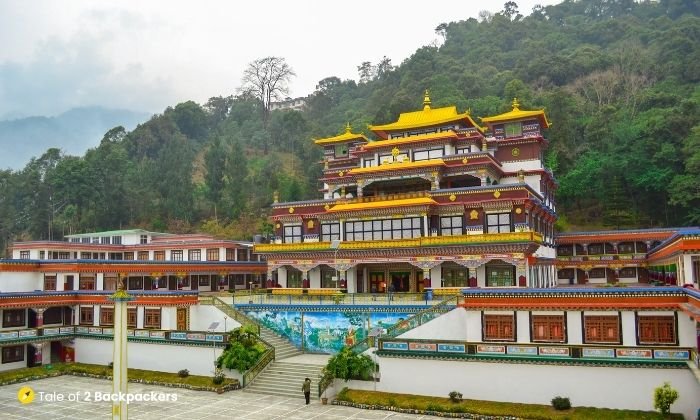
So once you are at the city, there are a lot of places to visit in Gangtok and loads of things that will simply make you fall in love with this hilly capital of Sikkim. We have collated the best of them for your next trip to Gangtok.
About Gangtok, the Capital of Sikkim
Gangtok was not always the capital city of Sikkim. When the Namgyal dynasty established their rule in Sikkim in 1642, Yuksom was declared the capital of the kingdom of Sikkim. Quite obviously, Sikkim was then a free kingdom ruled by monarchy. Later, Rabdentse was declared the capital from 1670 to 1814 and then Tumlong was the capital between 1814 and 1894. Finally, King Thutob Namgyal transferred the capital of Sikkim to Gangtok in 1894 and it became the centre of royal administration in the kingdom of Sikkim.
Much later in 1975, Sikkim joined India as its 22nd state and Gangtok became the capital of Sikkim. While Lepchas are the original inhabitants of the city, Bhutias and Nepalis also form a large part of the population. Gangtok has always remained a peaceful place having an eclectic mix of cultures and ethnicity.
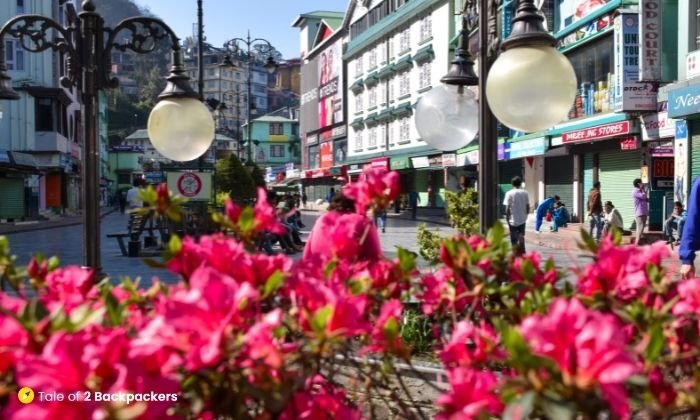
How to reach Gangtok?
Like Darjeeling, you can reach Gangtok from Bagdogra, Siliguri or NJP. New Jalpaiguri or NJP is the nearest railhead. Gangtok is located about 125 km from NJP and Bagdogra Airport and it takes about 4 to 5 hours to reach there.
Recently, Sikkim has opened its own airport at Pakyong. The town is located about 22 km south of Gangtok. Pakyong Airport, located at an altitude of 4646 feet is one of the highest airports in India. However, Pakyong airport is not fully operational and you will get flights only from Kolkata and New Delhi to Pakyong. Private taxis are available from Pakyong Airport to Gangtok city and it takes about 1 hour to reach.
Those looking for budget options, numerous shared jeeps are also available for Gangtok from Siliguri SNT Bus Stand. Buses are also available from Siliguri Bus stand to Gangtok, but jeeps are more comfortable.

Gangtok is located about 98 km from Darjeeling and it takes about 3.5 to 4 hours to cover the distance from Darjeeling to Gangtok. Kalimpong is about 75 km (3 hours journey by car). Private cars are available from all these places to Gangtok and vice versa.
Tip: Travelers coming from America will need to get a visa online
prior to arrival. The India evisa for US citizens is very easy and is
usually issued in 2-4 days.
Getting Around Gangtok
Taxis, both private and shared, are the main mode of transport in and around Gangtok. You can get a total tour package from local travel operators or can go to the local taxi stands and negotiate on your own.
For travelling from Gangtok to other parts of Sikkim, you can either book a car or travel by shared sumos and jeeps. Buses also ply in Gangtok, but the numbers are very less.
There are a number of taxi stands in Gangtok, each earmarked for specific destinations.
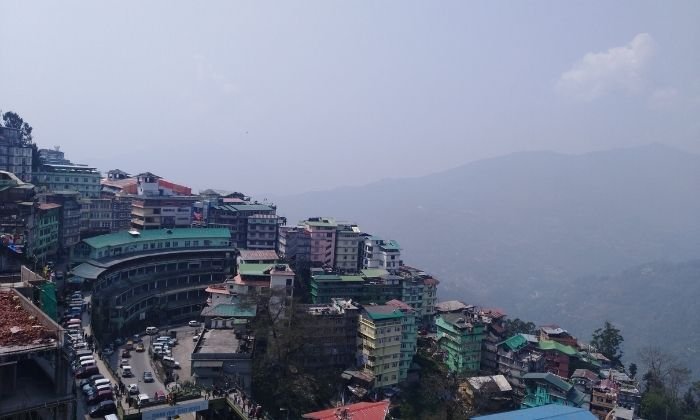
Gangtok Taxi Stands
Deorali Taxi Stand
Deorali Taxi Stand, also known as the Mainline Taxi Stand is the most popular taxi stand located at Deorali Bazar on the NH10, about 2 km from Gangtok town centre. Commercial taxis from West Bengal and other states are not allowed to enter Gangtok town beyond Deorali Taxi Stand.
From Deorali Taxi Stand you will get small taxis and larger SUVs for sightseeing in Gangtok.
You will also get shared sumos to Siliguri, NJP, Darjeeling and Kalimpong from Deorali Stand. Taxis for Siliguri are usually available everyday from morning till 5:30 PM in the evening.
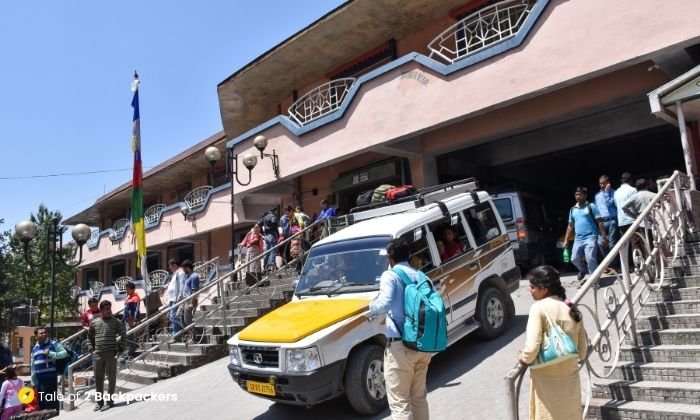
Vajra Taxi Stand or North Sikkim Taxi Stand
This Taxi Stand is located near the Vajra Cinema Hall in Gangtok. As the name suggests, you will get shared jeeps to various places in North Sikkim like Mangan, Phodong, Kabi Lungchok and sometimes even Lachen and Lachung.
Please Note: You need a separate permit to visit protected areas of North Sikkim like Lachen, Lachung, Gurudongmar Lake and Yumthang Valley.
You can actually book private taxis from Vajra Taxi Stand with the local drivers and negotiate the rates. The drivers can also help you with the required permits.
M G Marg Taxi Stand
This is another taxi stand just below the M G Marg. From here you will get taxis, both private and shared to places in West and South Sikkim. You will get shared jeeps to places like Pelling, Geyzing, Rinchenpong, Jorethang, Ravangla and Namchi. You will also get private cars from here for local sightseeing in Gangtok.
There is another Taxi Stand near the Children’s Park near M G Marg from where you can get shared cabs and taxis to places nearby in and around Gangtok.
There are no city buses within Gangtok. So you have to depend on taxis for sightseeing tours.
However, SNT (Sikkim nationalized Transport) buses are available from Gangtok to Siliguri and Kalimpong. The main SNT Bus Stop is located near the Paljor Stadium Road, about 7 minutes walking distance from M G Marg. There is another bus stand at Deorali Bazar area.
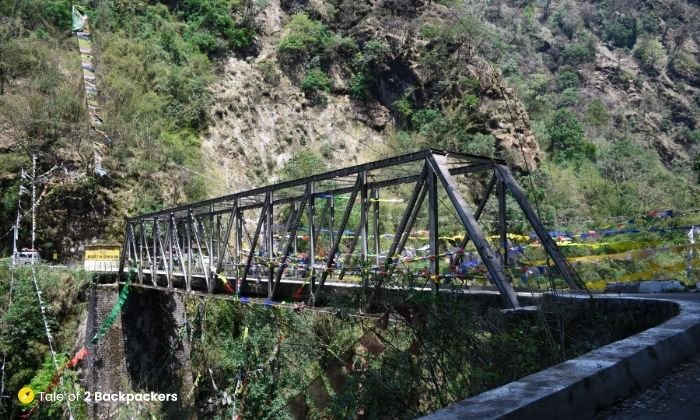
What is the Best Time to Visit Gangtok?
The weather of Gangtok is quite similar to that of Darjeeling. This is usually one of the reasons why these two places are often visited together. Like most of the hill stations, Gangtok too experiences extreme cold and rains.
| Months | Season | Weather |
| March to mid-April | Spring | Weather is quite good. There is chill in the air, but it is not biting cold. The skies are clear and you will get great views of the Kanchenjunga. Shoulder season. Good time to visit. |
| Mid-April to mid-June | Summer | Weather is cool and comfortable. Temperature can go upto 22 degrees in the morning. Perfect weather for outdoor activities and sightseeing. Peak season for Gangtok and Sikkim |
| End-June to September | Monsoon | Heavy rains are expected. Weather remains cloudy and visibility of mountain ranges is low. Also Sikkim is quite prone to landslides during monsoon. Not very ideal season |
| October to November | Autumn | One of the best seasons to visit. The weather remains pleasant for outdoor activities, sightseeing and skies are clear for viewing snowclad ranges. Peak Season |
| December to February | Winter | Weather is very cold particularly in the early morning and nights. Average temperature is around 4 degrees.Snowfall is not common in Gangtok, but routes to other high altitude places can be blocked due to snowfall. Fog is also common, especially in February. Shoulder Season |
Places to Visit in Gangtok
There are a lot of tourist attractions in and around Gangtok including beautiful monasteries, waterfalls and viewpoints. Here, we have given a few of the main attractions and places to visit in Gangtok.
1. M G Marg
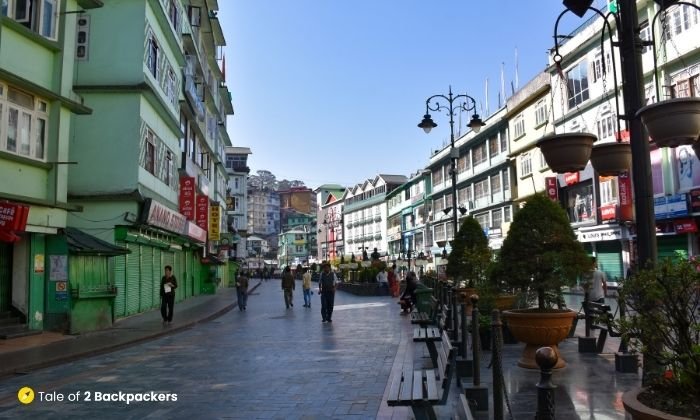
The M G Marg is the heart of Gangtok and is literally so. It is a pleasant walking street with no vehicles, rowdy traffic or garbage. This is definitely one of the best places to visit in Gangtok. There are numerous shops and food joints on either side of the M G Marg and seats in the between. Once you visit M G Marg, you will simply realise that you are in a different place and not in any crowded Indian city.
2. Rumtek Monastery
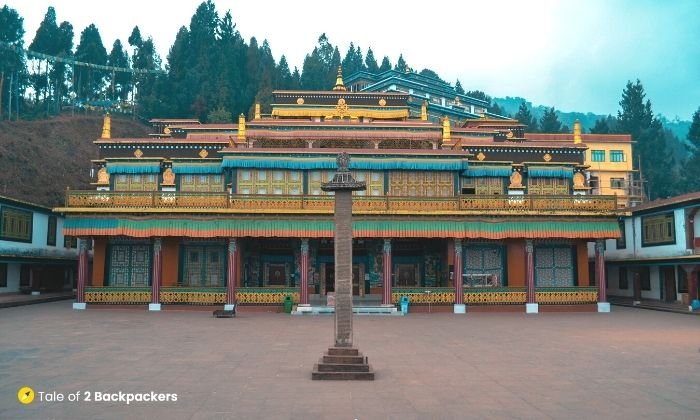
Located about 23 km from the main city, Rumtek Monastery is the most famous monastery in Gangtok and must be on your list of places to visit in Gangtok.
Rumtek monastery is one of the largest in Sikkim and belongs to the Kagyu sect that originated in the 12th century in Tibet. The architecture of the monastery is one of the finest in the world and resembles the original one in Tsurphu, Tibet.
Situated on a hill-top, you can see an amazing view of Gangtok town from the monastery. It houses some of the rarest Buddhist religious artwork in the form of wall murals, silk paintings and thangkas (scrolls with intricate hand paintings) and 1001 miniature golden models of Buddha.
3. Enchey Monastery
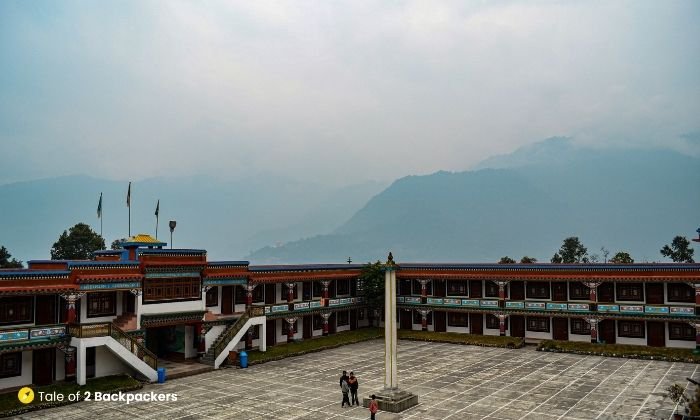
Situated on the northern outskirts of the city on the Nathula-Gangtok road, Enchey monastery is almost 200 years old. Enchey Monastery literally means ‘the solitary temple’. The small Buddhist monastery is surrounded by pines and conifers is one of the most beautiful places to visit in Gangtok.
The monastery was rebuilt in 1908 by the 10th King of Sikkim and renovated in the style of a Chinese pagoda. Entrance to the main shrine depicts the Kings of four cardinal directions that protect the monastery and the universe. It remains open for visitors everyday between 6 AM to 4 PM. You can hire a taxi from Gangtok and reach Enchey in 15 to 20 minutes.
4. Lingdum or Ranka Monastery

Lingdum Monastery or Ranka Monastery is situated 20 km from Gangtok and is considered to be the most beautiful in East Sikkim. Like the other two, Ranka monastery is surrounded by forested mountains as well.
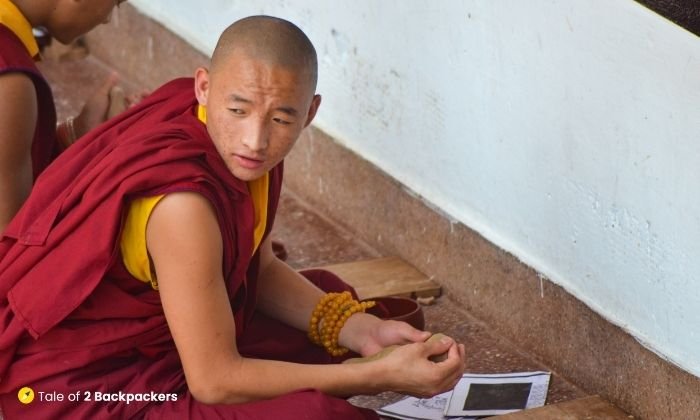
The monastery has a huge courtyard and comprises a two-storeyed building. There is a stairway that leads to the upper level where the inner sanctum is located with a huge golden Buddha statue. The walls are adorned with intricate paintings and beautiful thangkas.
5. Tashi View Point

Tashi viewpoint is located around 8 km from Gangtok town. It is the perfect place to witness the surrounding mountains and valleys of Gangtok and the town itself. It offers the gorgeous view of the sunrise with the snow clad peaks illuminated with changing colours. On the opposite side, you can view the Phodong and Labrang monasteries.
6. Ban Jhakri Waterfall and Energy Park
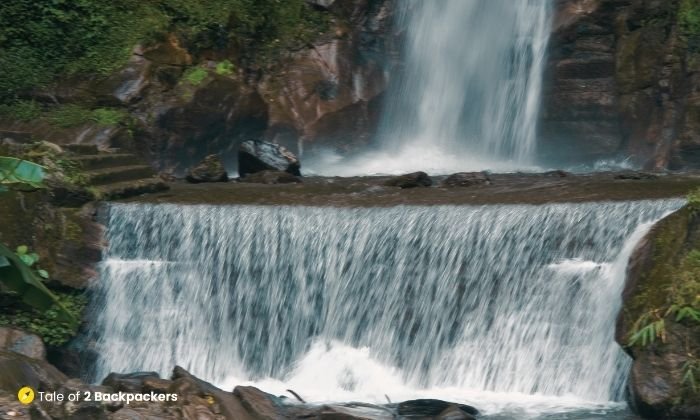
Ban Jhakri waterfall is located in a beautiful landscaped park within a forested area about 7 km from Gangtok town and is one of the most beautiful places to visit in Gangtok. The park spread across an area of 2 acres is well manicured with paved pathways and footbridges. There is also a manmade lake here where you can go boating.
There are gazebos at several points where you can relax while soaking in the view of the flowing stream that forms at the bottom of the waterfall and the greenery all around. The park uses non-conventional energy sources like solar energy. Also there are slides and swings in the park that generate power when used by the children. The 100 foot waterfall, known as the Ban Jhakri Waterfall is located at the end of the park and is a great site to enjoy.
7. Bakthang Waterfalls
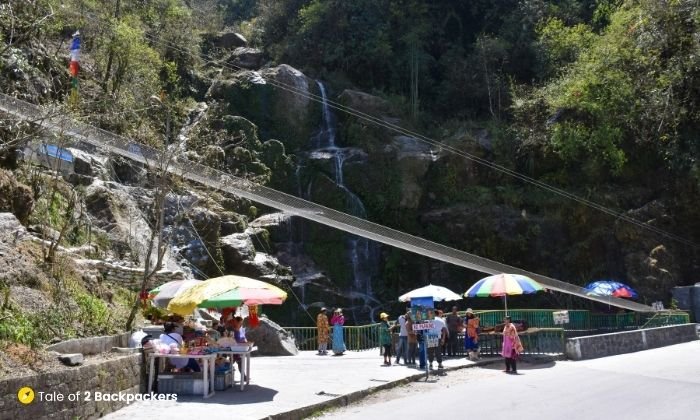
This wonderful waterfall is located on the North Sikkim Highways towards the Tashi View Point around 3 km from Gangtok. It is not that high but the width makes it look powerful. There is a rope sliding available here for the adventure enthusiasts. It is a small slide, but can be quite thrilling as the droplets of water are sprinkled on you as you slide down the rope. It takes around 20 min to reach the place from Gangtok and the place offers great views of the mountains and a part of the Gangtok city.
8. Ganesh Tok
Ganesh Tok is located close to Tashi viewpoint and is a temple dedicated to Lord Ganesha. It is located at an altitude of 6,500 ft and at a hill adjacent to that of the huge TV Tower. Tourists come here not only to offer prayers to Ganesh, but also to admire the magnificent views from the viewing lounge and the circular balcony around it. Beside the small temple is the viewing lounge with glass panels. You can see Gangtok town, rolling hills and the snow capped mountains including Kanchenjunga.
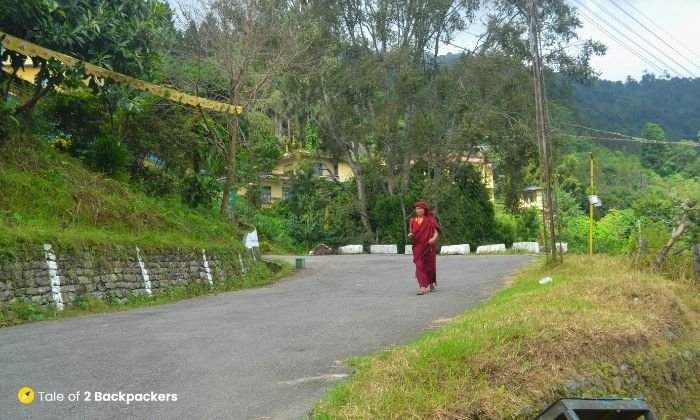
9. Hanuman Tok
Hanuman Tok, dedicated to the Hindu God, Lord Hanuman is located at an altitude of 7200 ft and 11 km from Gangtok town on the road towards Nathula. The place has a serene atmosphere and offers one of the best views of the Kanchenjunga ranges from Gangtok.
Legend has it that Hanuman stopped here for some time before he flew down to Lanka with Sanjeevani (herb) Mountain from the Himalayas to save Laxman, Lord Rama’s brother. There is also a temple of Sirdi Sai Baba here just right of Lord Hanuman Temple. The cremation ground of erstwhile Namgyal Royal family is located nearby.
10. National Institute of Tibetology, Deorali
The National Institute of Tibetology or the Namgyal Institute of Tibetology (as it was earlier called) is one of the most important institutes doing research in Tibetan language and culture. The building is a fine example of the Tibetan architecture and designs. It has a museum in its premises and a Tibetan library that has a rich collection of books about Tibet and the Himalayas. The Institute is located at Deorali within a serene ambience. The most remarkable thing to see here is the majestic image of Manjushri (Bodhisattva of knowledge and wisdom), which was brought here all the way from Tibet.
11. Do Drul Chorten

The Do Drul Chorten is located at Deorali at a short walking distance from the Namgyal Institute of Tibetology. The Chorten was built by Trulshi Rimpoche in 1945. The Stupa is marked by a golden dome that can be seen from various places in Gangtok. The Stupa is surrounded by 108 prayer wheels all of which have Tibetan prayers inscribed on them.
12. Ridge Park, White Hall and Flower Exhibition Centre
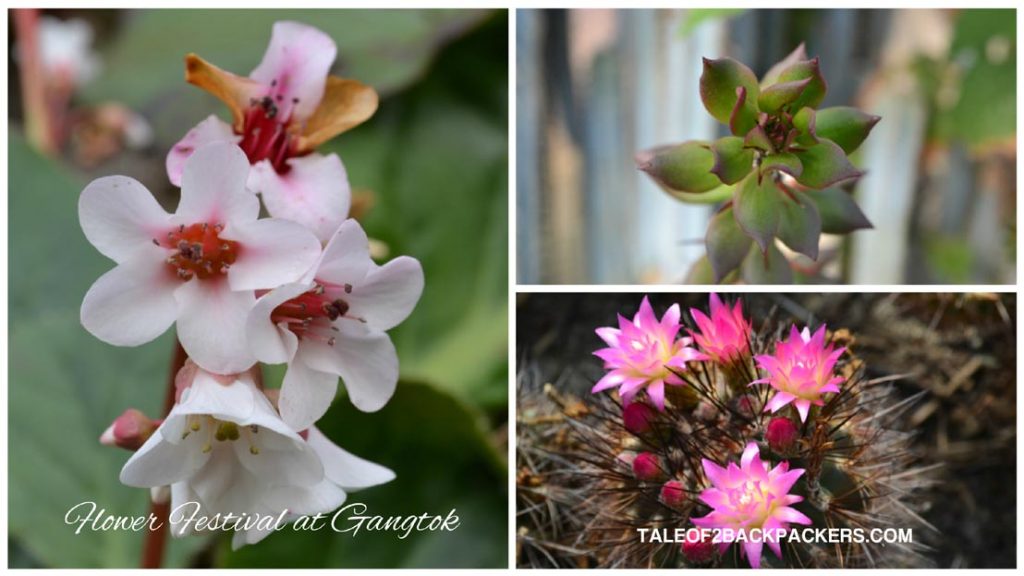
Ridge Park is a beautiful garden that boasts of Himalayan orchids and shrubs that Sikkim is so famous for. The Ridge is actually a flat road located uphill from the Gangtok town leading to the Palace Gates. It is just a fifteen minutes’ walk from M.G. Marg in Gangtok.
The White Hall is a historical two storey building of British architecture built in 1932 in memory of the first British Political Officer Sir James Claude White. The Flower Exhibition Centre just adjacent to the White Hall is the place that draws a large number of visitors during the annual flower exhibition. You will find a number of orchids and flowers all around the year, but the best time to visit the place is during the spring season between April and May. The International Flower Festival at Gangtok, held in May every year, takes place here. This place must be on your list of places to visit in Gangtok in May.
Ridge Park is open from 8:30 AM to 5:00 PM.
13. Ropeway Ride

If you are at Gangtok, do not miss the ropeway ride. It starts from Deorali and covers a kilometer of zig-zag way to Tashiling. You will get a magnificent view of the city from the ropeway.
14. Paragliding in Gangtok

The thrill of getting an aerial view of Gangtok city as well as some Himalayan peaks is simply inviting. You can go for a paragliding in Gangtok. There are two types of paragliding trips offered in Gangtok – Medium fly and High Fly. You do not require any special training for these trips as you will be accompanied by a trained pilot.
Baliman Dara near Gangtok is the takeoff location for the medium Fly. The flying time is 5-10 minutes. Landing takes place at a stadium field at Reshithang Sports Village. For the High Fly, the takeoff location is Bubbuley Dara and the altitude from where you take off is almost 2200 meters.
Gangtok Sightseeing Tours
Just like any other hill stations, Gangtok offers sightseeing tours as well. You have to take a local taxi or reserve a car for the sightseeing tour in Gangtok.
The most popular sightseeing tours in Gangtok are the 3-point tour, 7-point tour and the 10-point tour. These are just the standard tours. You can definitely talk with your driver and adjust the places as per your choice. Here, I will just mention the places visited in these tours.

Places visited in Gangtok 3-point Tour (takes about half-day)
- Tashi Viewpoint
- Hanuman Tok
- Ganesh Tok
Tentative cost for small taxi: Rs 1200 (In high season) and Rs 1000 (in low season)
Places visited in Gangtok 7-point Tour (half-day tour)
- Tashi Viewpoint
- Hanuman Tok
- Ganesh Tok
- Bakthang Waterfall
- Enchey Monastery
- Flower Exhibition Centre
- Handicrafts Centre
Tentative cost for small taxi: Rs 1800 (In high season) and Rs 1500 (in low season)
Places visited in Gangtok 10-point Tour (half-day)
- Tashi Viewpoint
- Hanuman Tok
- Ganesh Tok
- Bakthang Waterfall
- Enchey Monastery
- Flower Exhibition Centre
- Handicrafts Centre
- Drodul Chorten
- Institute of Tibetology
- Ropeway or Cable car
Tentative cost for small taxi: Rs 2000 (In high season) and Rs 1800 (in low season)
There is another 10-point tour offered where you will be taken to Ranka Monastery, Rumtek Monastery and Ban Jhakri Waterfall.
The tentative cost for this full-day trip is Rs 3000 (In high season) and Rs 2800 (in low season)
Day Trips from Gangtok
The most famous day trip from Gangtok is the full day trip to Tsomgo Lake, Baba Mandir and Nathula Pass.
Tsomgo Lake

Tsomgo Lake or Chhangu Lake (as it is locally called) is an oval-shaped beautiful glacial lake situated at an altitude of 12310 ft. The lake is located about 35 km from Gangtok and takes about 2 hours to reach by road. The name Tsomgo means ‘Source of water’. Tsomgo Lake is definitely one of the most beautiful places to visit in Gangtok.
During summer and autumn, you will find primula flowers and other alpine vegetation around the lake. The lake becomes frozen and a snowfield during the winter months. There are a number of stalls and shops selling food, drinks and snacks. You can also take a ride on the yaks at Tsomgo Lake.
Nathu La and Baba Mandir
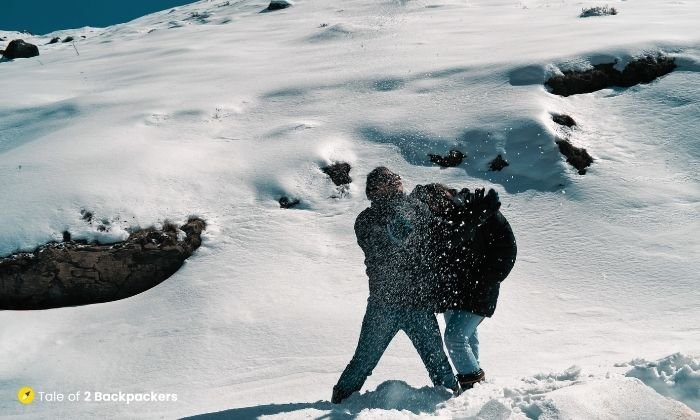
Nathu La is a mountain pass that was a part of the old trade route between India and China. Nathula Pass is located at the Indo-Chinese border at an altitude of 14,140 ft. Permits are required to visit the Nathu La which can be obtained from the Gangtok DC office. The Baba Mandir located atop the pass is named after the Sentry Harbhajan Singh, who died here in 1968.The border security personnel here believe that his spirit is still alive and is looking after the army officials posted at the terrain.
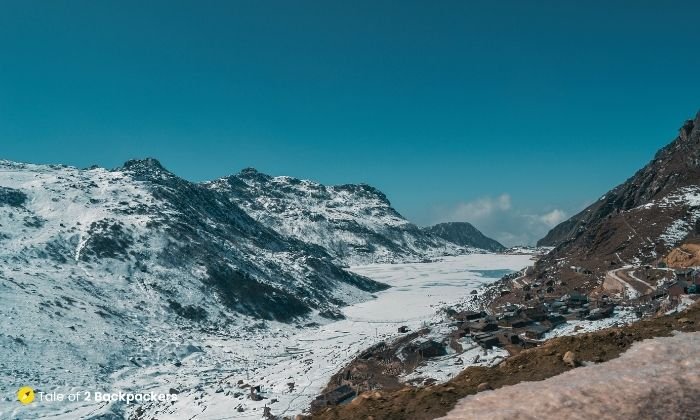
You have to take a large vehicle for a trip to Tsomgo Lake, Baba Mandir and Nathula Pass. These places are restricted areas and you will need permits to visit them. You have to carry valid ID proofs (PAN Card is not accepted) and photographs to get the permits.
We would suggest you get your permits done by some reputed travel agents or your hotel in Gangtok. Also get your permits done at least a day in advance.
Tentative Fare for Car
Tsomgo Lake and Baba Mandir: Rs 4000 – 4500
Tsomgo Lake, Baba Mandir and Nathula Pass: Rs 5500 – 7000
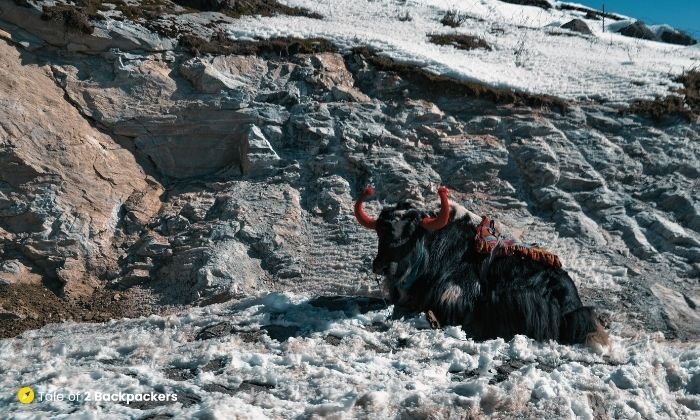
Day Trip to Pelling
You can go for a day-trip to Pelling, Geyzing and Pemayangtse while staying at Gangtok. However, I would recommend staying at Pelling, which is a wonderful destination in West Sikkim.
Where to Stay in Gangtok?
Gangtok offers a wide range of accommodations starting from hostels, homestays, budget hotels, mid-range to luxury stays. There are a number of hotels around M G Marg, the most popular option for staying in Gangtok. M G Marg is literally the heart of the town and you will get all the good restaurants, shops and attractions nearby.
However, if you wish to avoid the crowds, then you can stay at homestays a little away from the town.
You can book your stay from here. This is one of the sites from where we do most of our online bookings.
Booking.comWhere to Eat in Gangtok?

Gangtok is a place for the foodies. You will get various Tibetan and Sikkimese cuisines. Also, simple street food like momos, thukpa are yummy. Most of the restaurants and eateries are around the M G Marg Area. Didn’t we mention M G Marg to be the heart of Gangtok?
A few famous restaurants of the city are Taste of Tibet, Café Culture, Green Tara restaurant, Gangtalk among so many others.
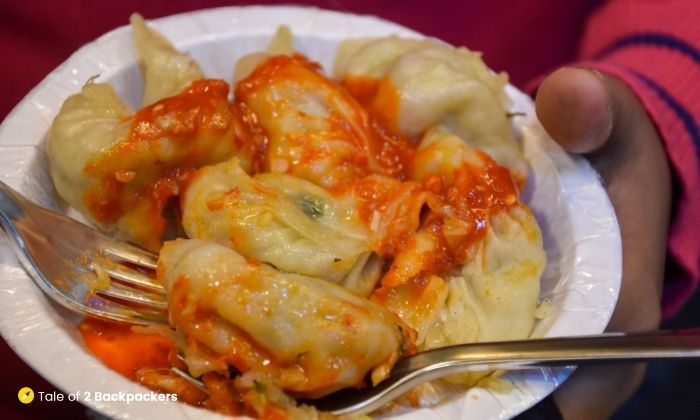

Gangtok Travel Guide (FAQs Answered)
Gangtok can be a bit expensive, especially for solo travellers, mainly because of transport options. But if you plan well, you can explore Gangtok on a budget very well. Budget accommodations are found in Gangtok and food is also cheap. Transportation to non-restricted places (where you do not need permits) can be cheaper if you opt for travelling in shared vehicles. For solo travellers or couples, you can look for other travellers like you and travel together to places like Tsomgo Lake and North Sikkim.
March to June is the best time to visit Gangtok and it is also the peak season. The weather is cool and is perfect for those who want to beat the heat of the plains. The months of October and November are also a good time to visit Gangtok. We would recommend you to avoid the monsoon.
Gangtok, as well as entire Sikkim is one of the safest places to visit in India. The people are helpful and the crime rate is also quite low there. Gangtok is also one of the safest places for women travellers. I have travelled across Sikkim solo without facing any problems or feeling unsafe!
2 days are enough to visit the major attractions of Gangtok. You can use one day for local sightseeing and another day for visiting Tsomgo Lake and Baba Mandir. From Gangtok, you can also visit North Sikkim, Pelling in West Sikkim and South Sikkim as well.
M G Marg area is the best area to stay in Gangtok. There are a number of hotels of all budget, mid-range and high-range categories in the M G Marg area. M G marg is the heart of the city and markets, restaurants are all quite accessible from there.
If you are visiting Gangtok in the summer months, carry light woolen clothes and jackets with you for the evening. While mornings can be bright and sunny, the evenings can get colder. For winter months, you must carry heavy woolen like sweaters and jackets. Also carry your scarfs, woolen caps and gloves for the winter months. Do carry proper shoes and socks as you might have to walk a bit to explore Gangtok.
Gangtok usually does not get snowfall in the winters. However, routes to high altitude places like Tsomgo Lake, North Sikkim might get snowfall and remain blocked during the winter. Tsomgo Lake and Nathula Pass get a lot of snowfall during late December and January. And so do places in North Sikkim (Gurudongmar Lake and Yumthang Valley) and some places in the Silk Route (Zuluk and Nathang Valley).
Hope our Gangtok Travel Guide helped you in planning your trip and decide on the places to visit in Gangtok. If you have any questions regarding Sikkim, ask your questions in the comment below or drop us a mail. If you found this blog useful, please share this with your family, friends and neighbours.
Pin it for a later read!
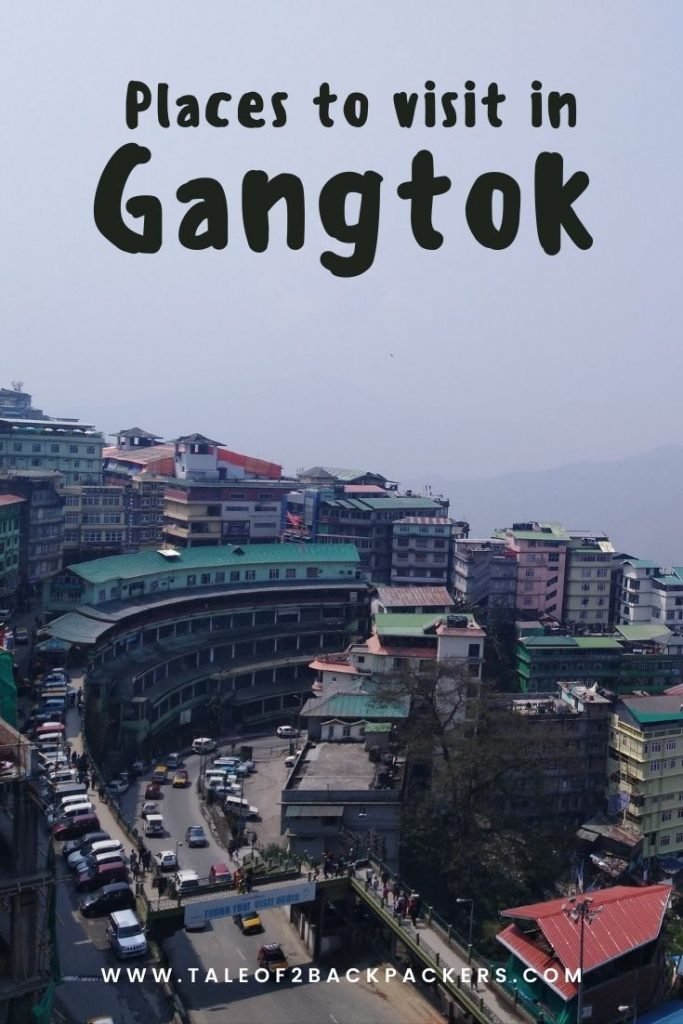
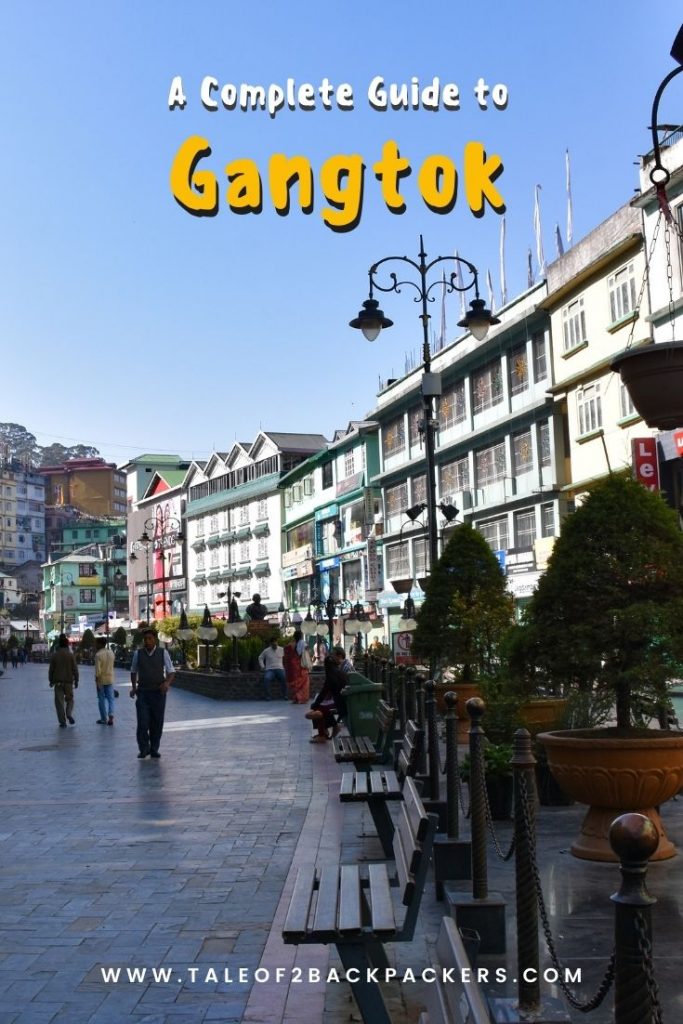


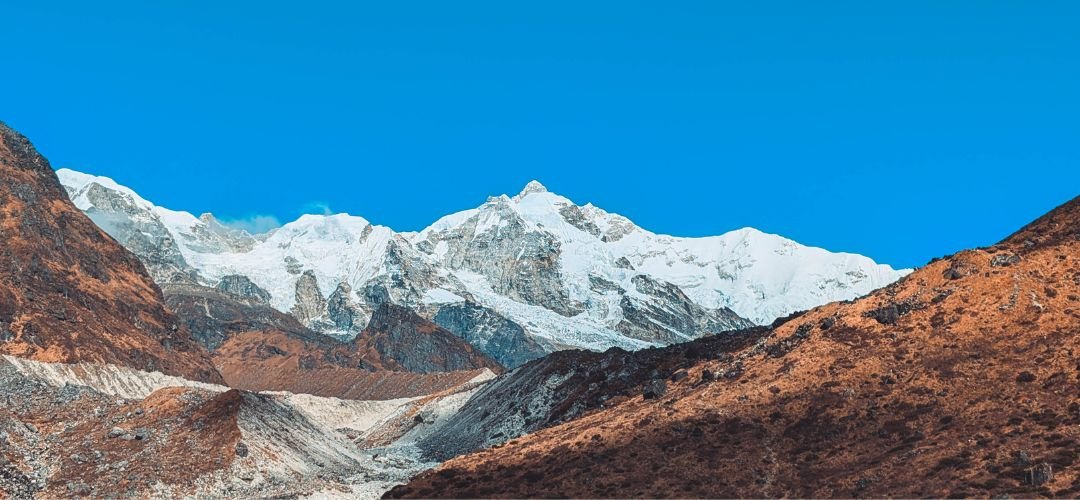
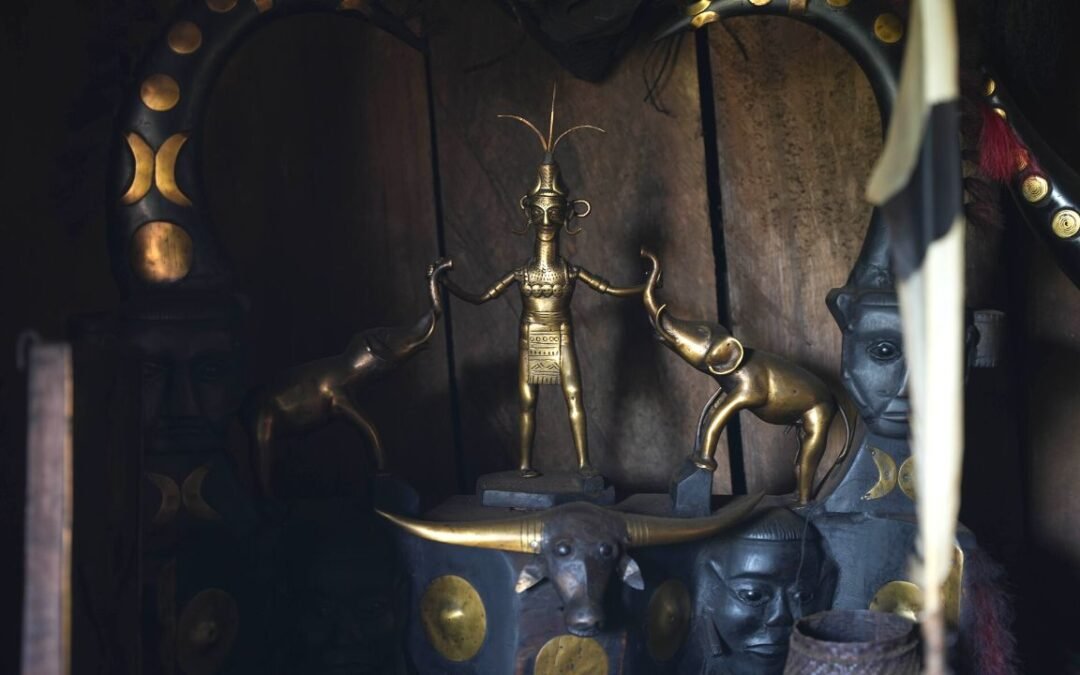
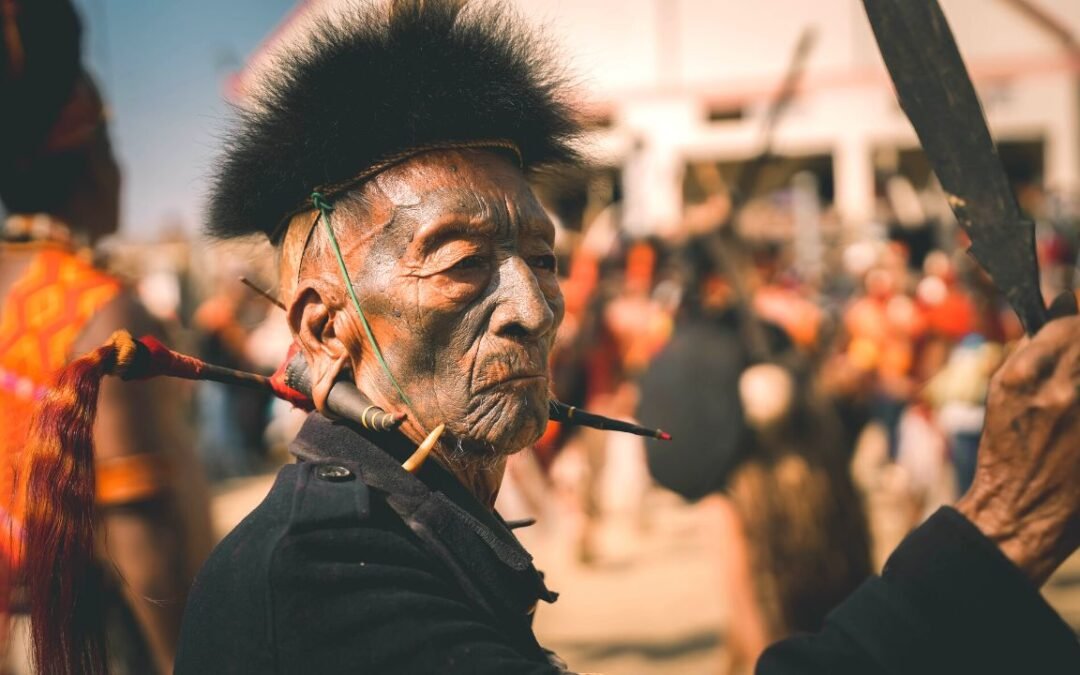
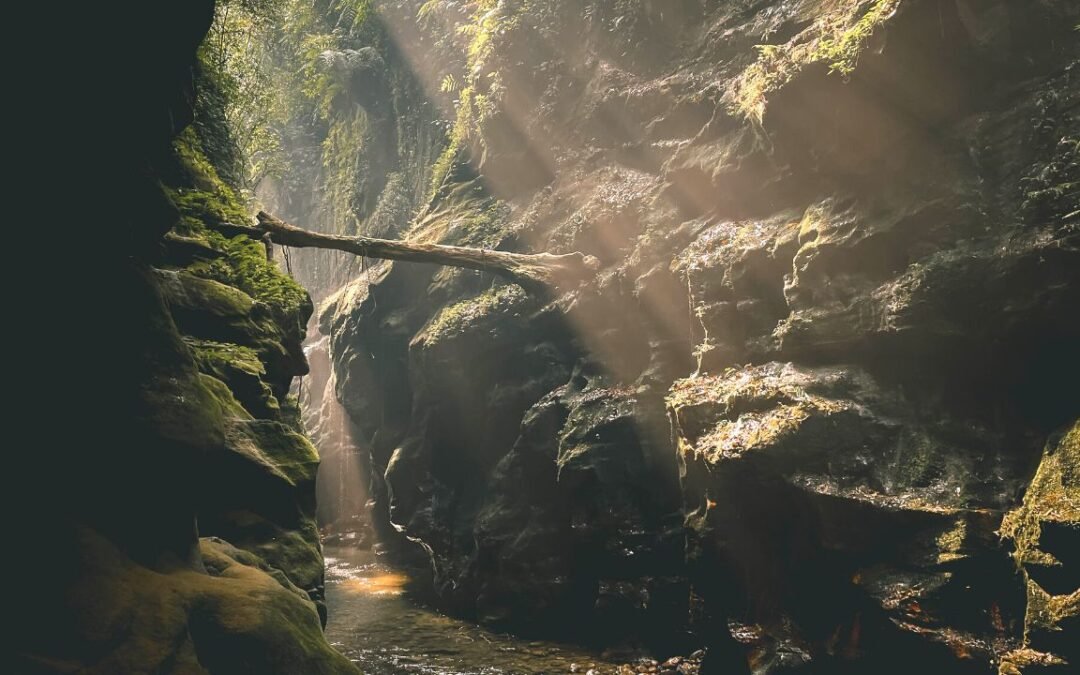
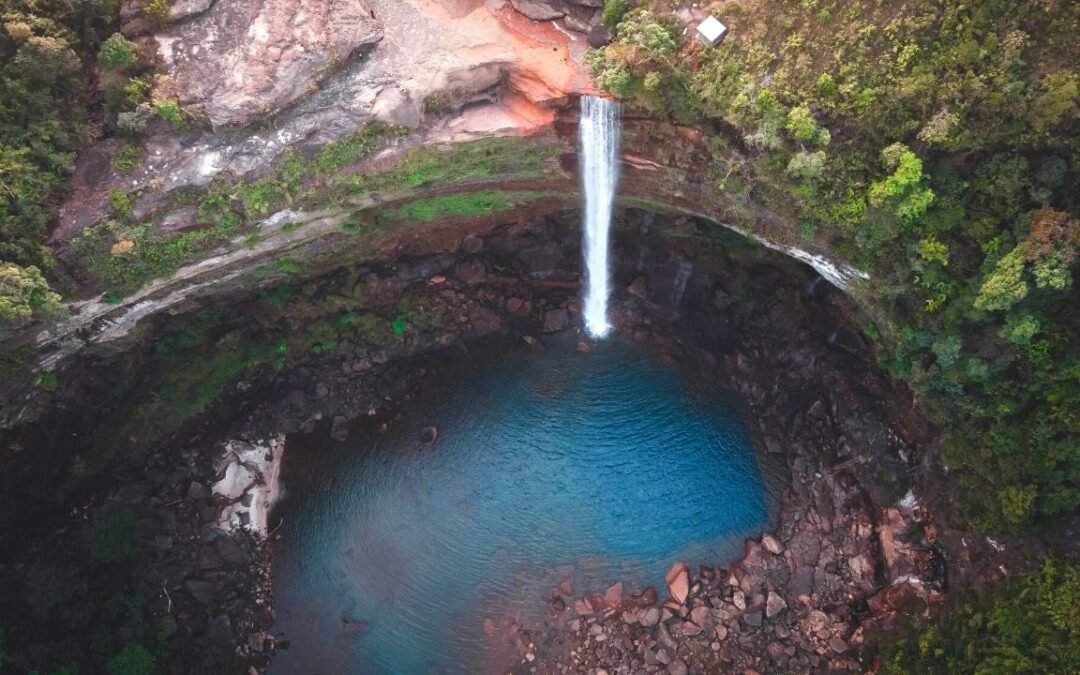
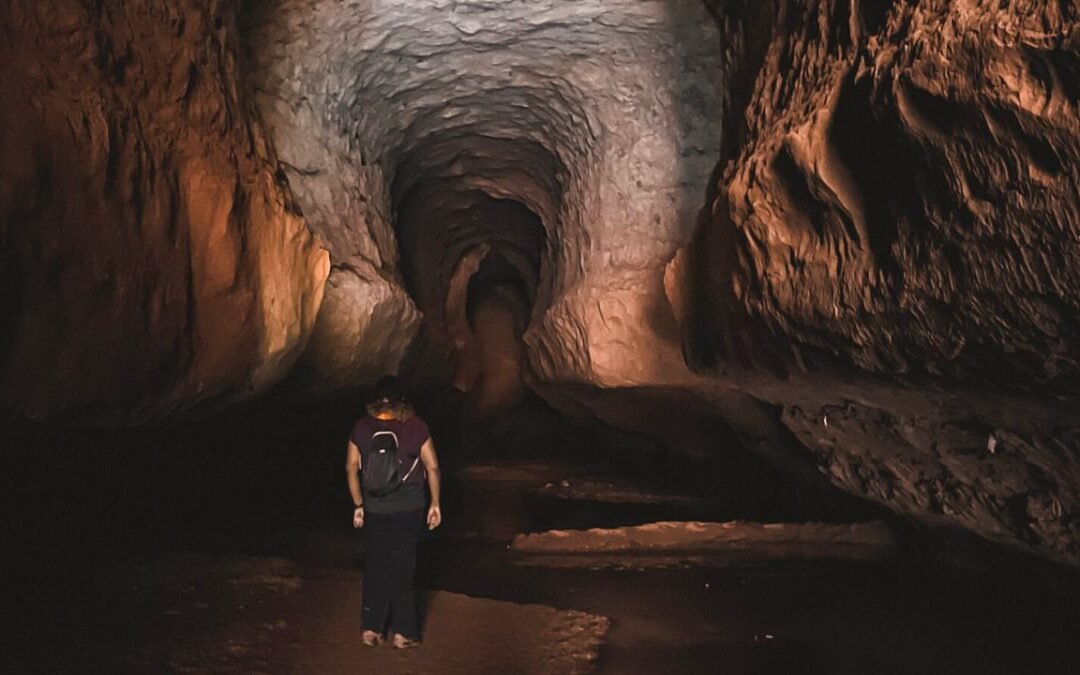
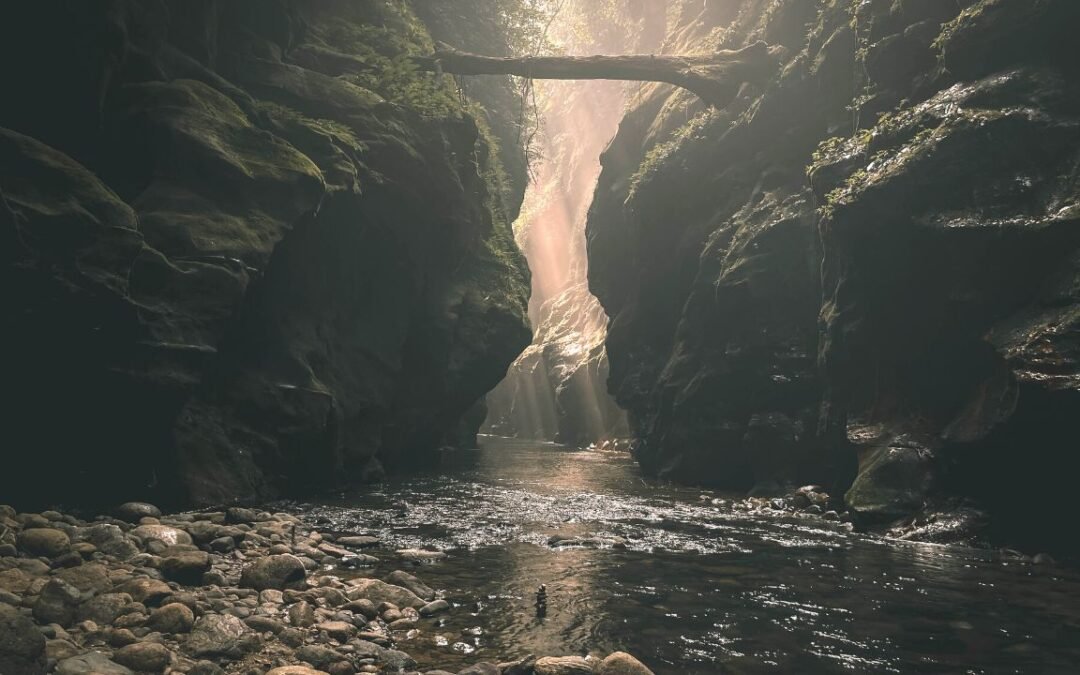
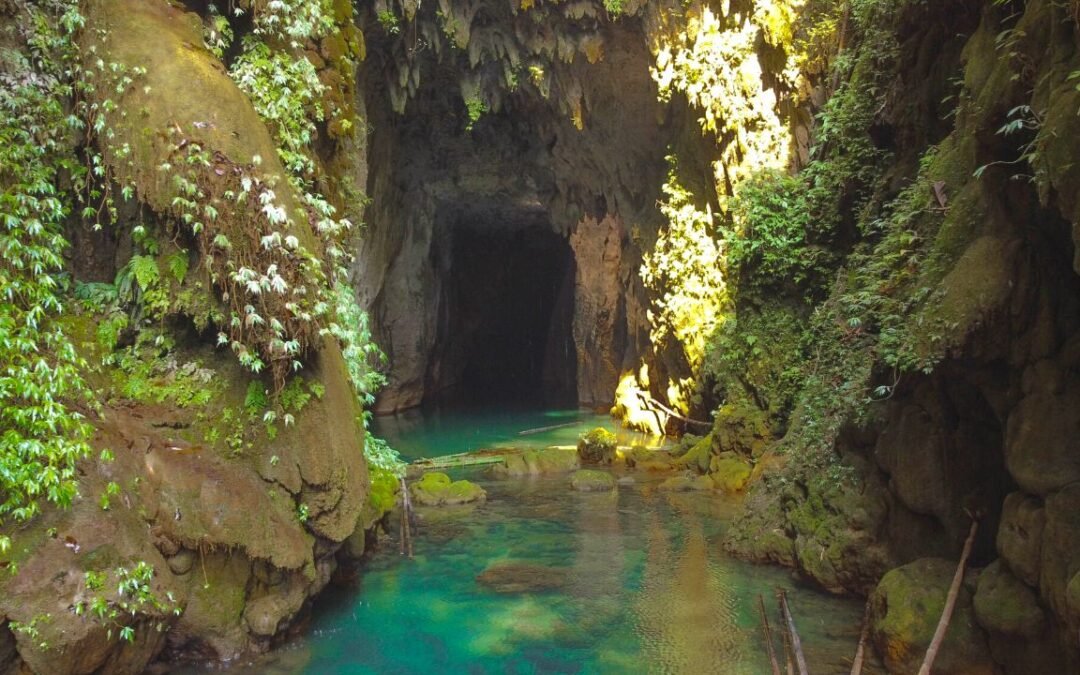
I found North Sikkim very beautiful. Have you guys been there. This is a very well written article. Great tips.
GANGTOK is capital town and a popular holiday destination of Sikkim. A bi-cable Jig-back Passenger Aerial ropeway of 935 meters long from Deorali Bazar to Tashiling Secretariat via Sikkim Legislative Assembly was built in the year 2003. The visitors can have a panoramic view of the full Gangtok city while taking a ride in this ropeway. DRILL (Damodar ropeways & infra limited) provides the cable car or ropeway ride service at Gangtok.
Wonderful post.This blog has an amazing information about the destination. Pi. Thank you so much for sharing the details.
Thank you so much!
What a well written article and beautiful photos. Your blog really captures the picturesque beauty of Gangtok. Last year before the pandemic hit, I along with my best friends planned a trip to Gangtok. Needless to say we were searching for a hotel which was both aesthetic and budget friendly. So with crossed fingers, we booked our 3 nights stay in Gangtok at Rosedell Inn. I must say, all 3 of us were so thrilled when we reached the hotel. The view from the balcony was astounding. The rooms were clean and spacious. The staffs were friendly and helpful. They even arranged camp fire for us with music and good food. It was definitely a night to remember!
Thank you so much!